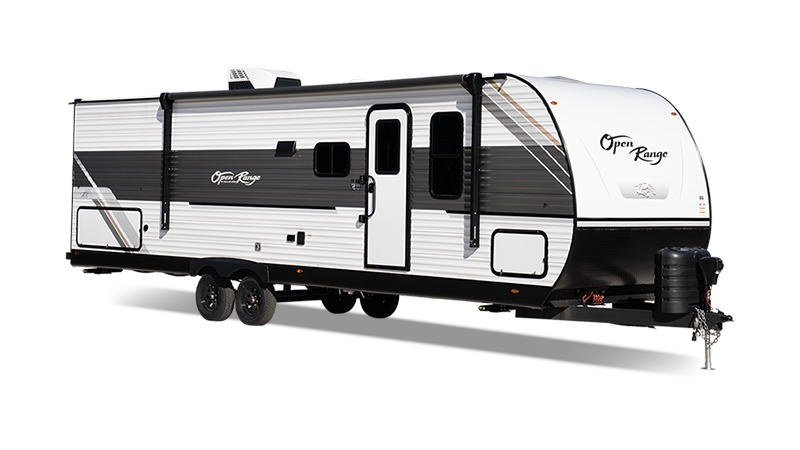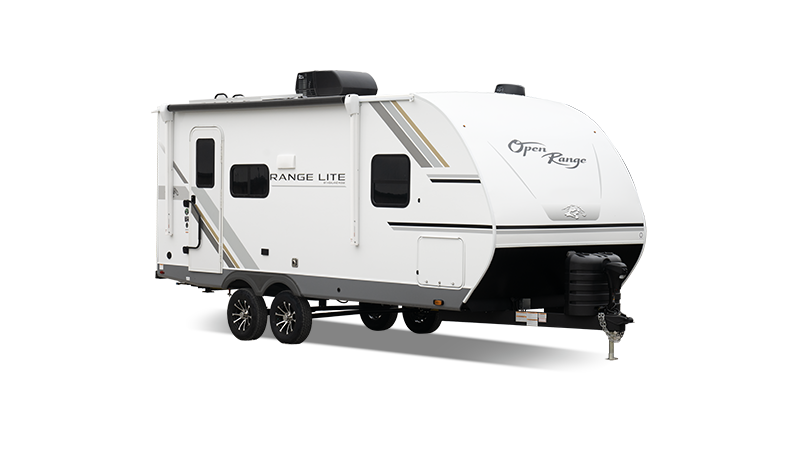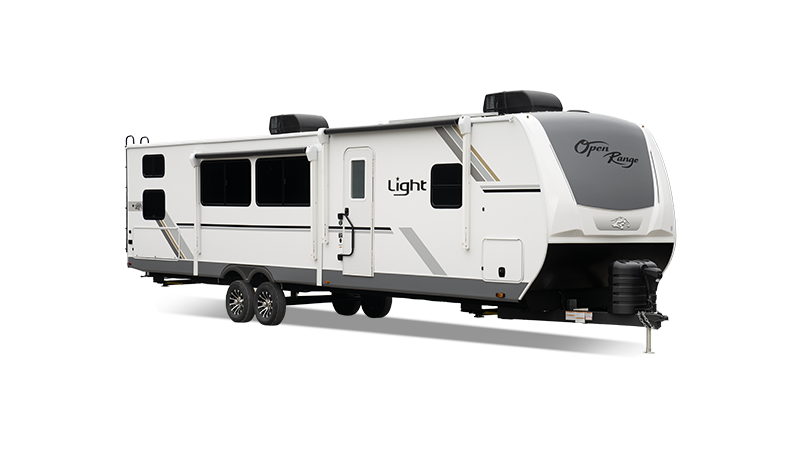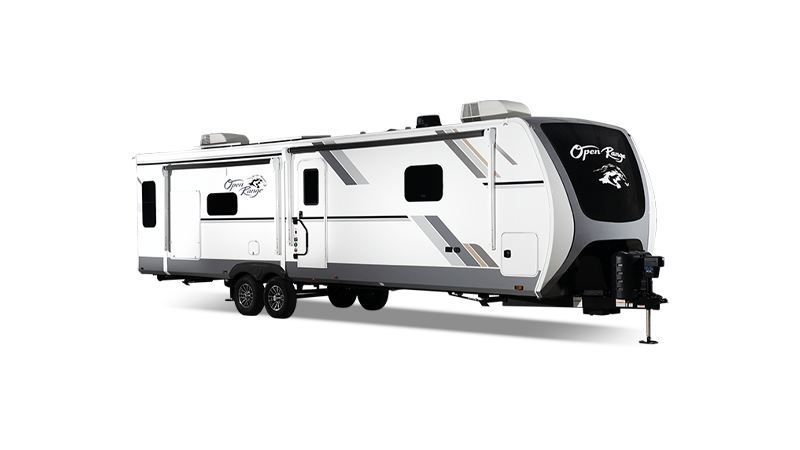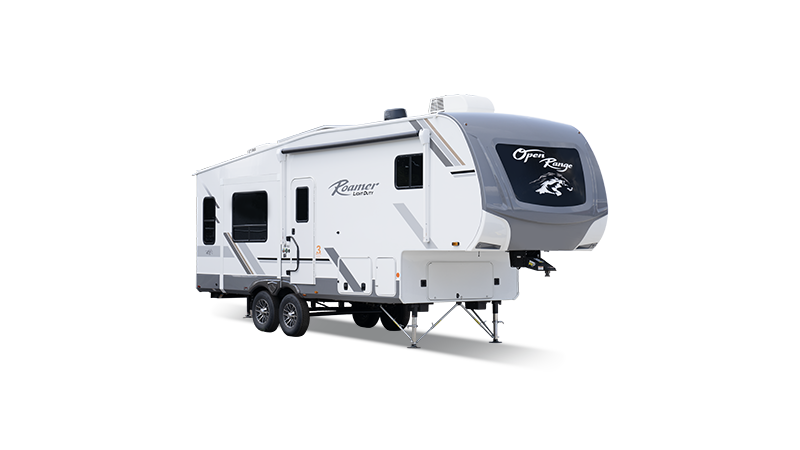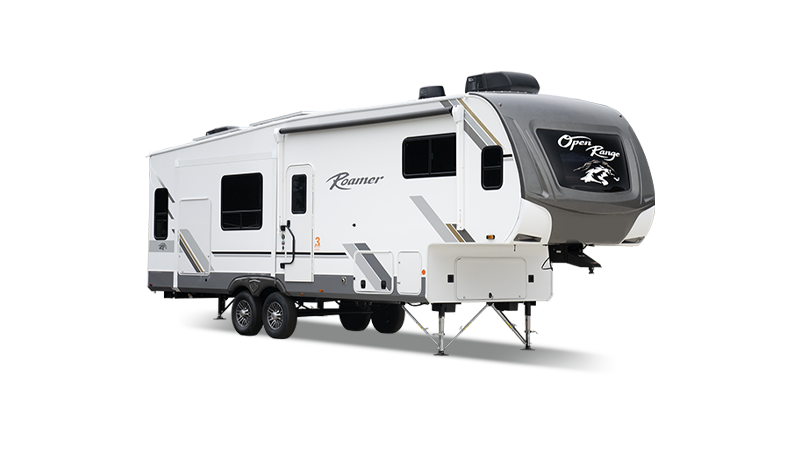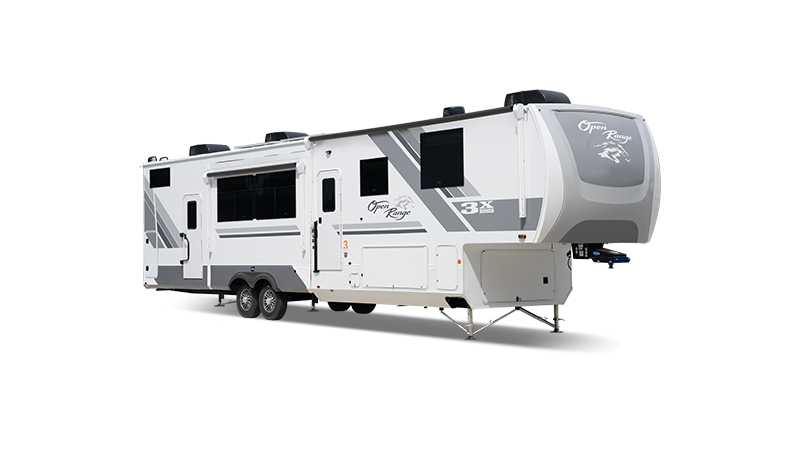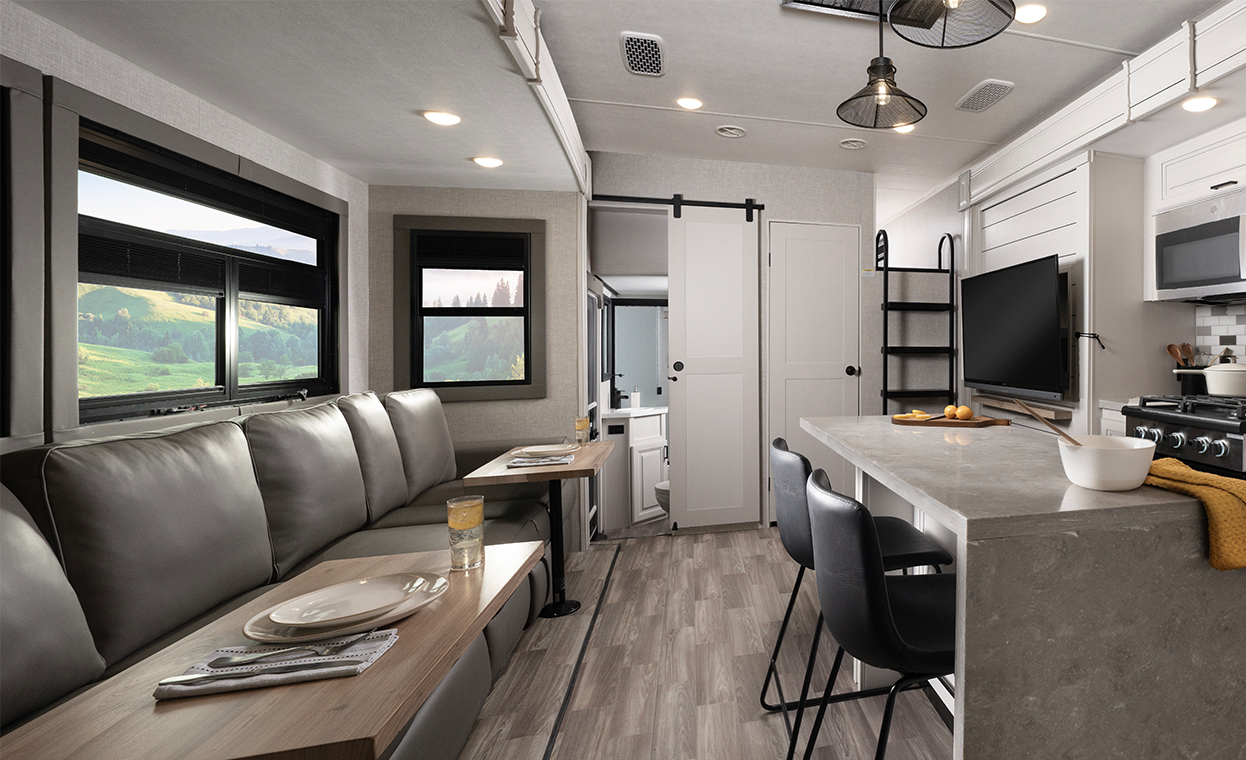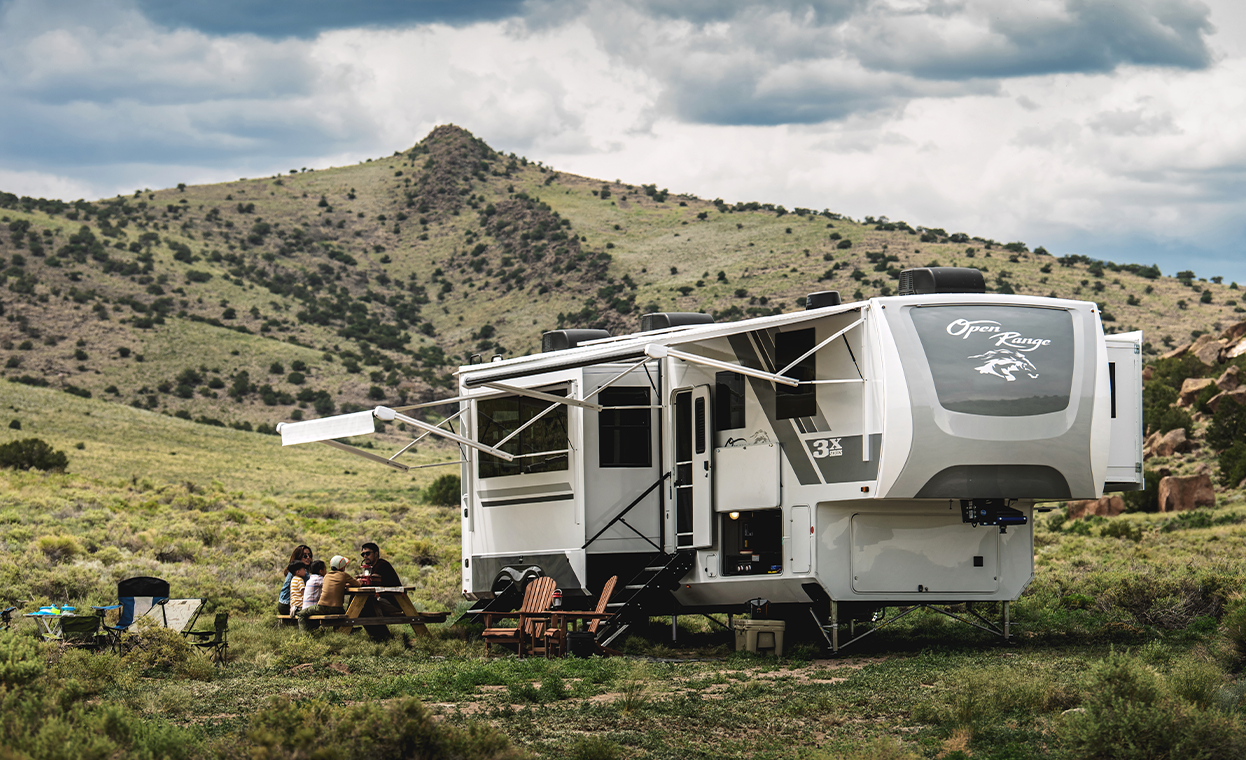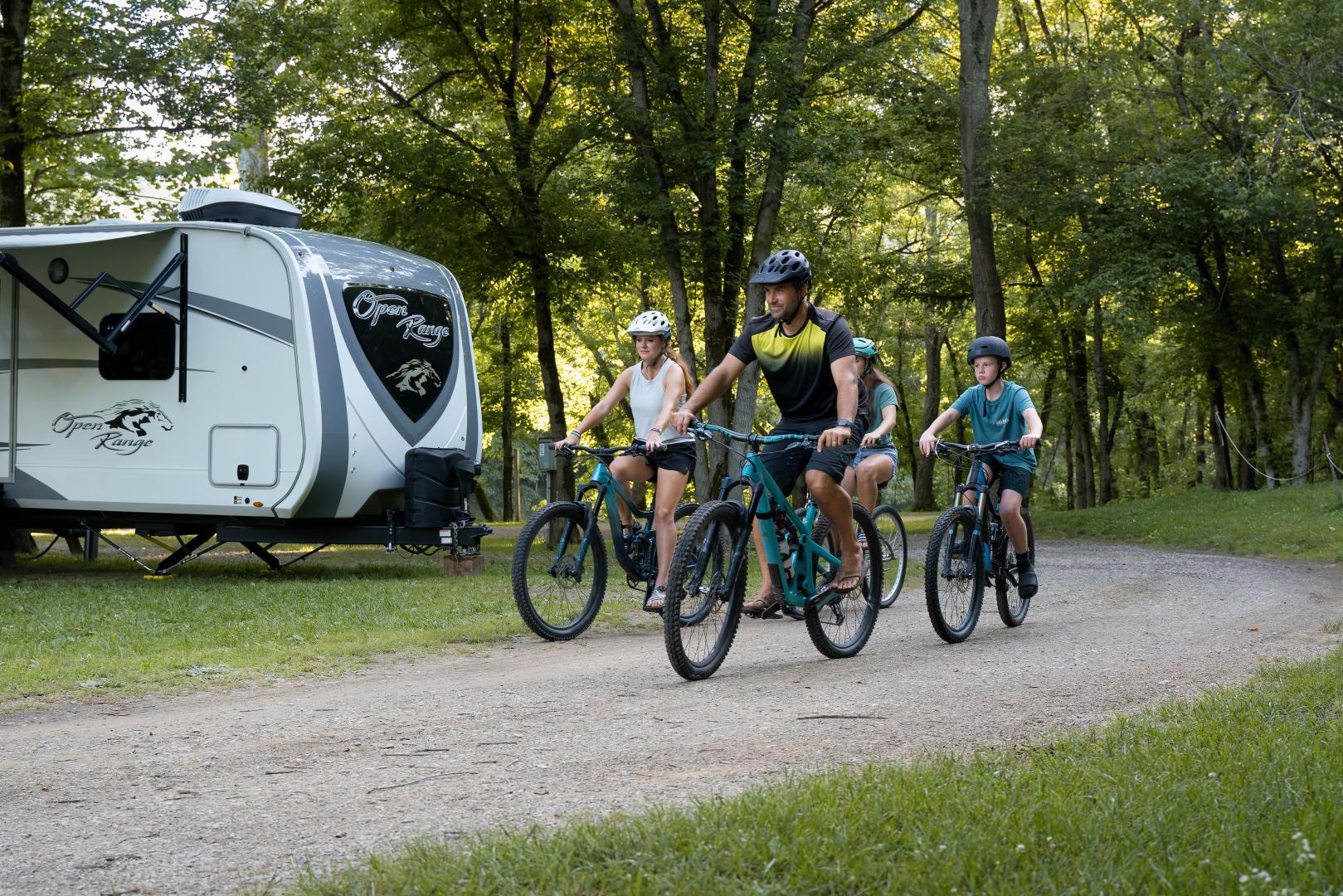Tips for Towing a Travel Trailer: Essential Tips and Gear
Travel trailer adventures start with safe towing. It can especially be intimidating when towing a travel trailer for the first time, but this article will go over all of the essential travel trailer towing equipment, and our expert tips on towing a travel trailer safetly so you can focus on owning the outdoors. Safe towing starts with the right equipment, from the tow vehicle to the hitch. Here are a few pointers and things to know about matching up the right gear with your trailer. When deciding which travel trailer is best for you, generally speaking, a light camper is easier to haul than a heavy one. Highland Ridge Travel Trailers, specifically, are designed to have more livable space by adding as little weight as possible, which doesn’t hurt the towing experience either.
Choosing the Right Equipment
Tow Vehicle and Engine Choice
Diesel engines provide the best combination of towing power and fuel economy. The low-end torque they deliver has similar characteristics to large V8 engines with a better range. Full-size trucks, particularly those with powerful engines and towing packages, are among the most popular and reliable choices for towing trailers. They offer the necessary strength and stability to handle larger and heavier travel trailers effectively. Many modern SUVs are designed with towing capabilities in mind. Mid-size and full-size SUVs equipped with towing packages can be a great choice for towing smaller to mid-sized travel trailers. Look for SUVs with higher towing capacities and adequate engine power.
Understanding Weight Ratings
Gross Vehicle Weight Rating (GVWR) is probably the most important measurement to understand. Your towing vehicle must have a towing capacity higher than the trailer’s GVWR. Weight added to your towing vehicle, passengers and cargo included, increases your GVW and factors into your vehicle’s GVWR.
Payload Considerations
Payload is important to understand as well. It’s the amount that the truck can hold in terms of cargo. This includes any other passengers (including pets), gear in the cab or bed of the truck and the weight of the hitch, or tongue weight, some of which transfers to the tow vehicle. Beware, RVs typically have more tongue weight than boats and other types of trailers. A general rule of thumb: tongue weight should be 10-15 percent of a trailer’s total weight.
Hitching Your Trailer
Types of Conventional Hitches.
There are five different classes of conventional hitches most travel trailers use when it comes to towing a trailer:
-
- Class 1: Up to 2,000 pounds
- Class 2: Up to 3,500 pounds
- Class 3: Up to 8,000 pounds
- Class 4: Up to 10,000 pounds
- Class 5: Up to 12,000 pounds
Most cars and crossovers come with Class 1, 2 or 3 hitches, while larger trucks and SUVs can be equipped with Class 3, 4 or 5 hitches.
Ensuring Proper Fit
Make sure the ball on your tow hitch is the same size as the coupler on your trailer. Incorrectly sized hitch balls are a top cause of trailer accidents. Each conventional hitch has a different sized receiver tube where the ball and ball mount go.
-
- Class 1 and 2: 1.25-inch receiver tube
- Class 3: 2-inch receiver tube
- Class 4 and 5: 2- or 2.5-inch receiver tubes, depending on the configuration
The important thing is making sure your trailer sits level, front-to-back. Ball mounts can be purchased that lower or raise the ball as needed.
Traveling Safely with Your Trailer
Using Safety Chains
When using safety chains from the trailer to the vehicle, connect them in a crisscross pattern, and be sure the chains don't touch the ground. If a trailer gets disconnected from the tow vehicle, the crossed chains will form a cradle of sorts for the tongue of the trailer. The chains should have enough slack to permit sharp turns.
Practicing Before Hitting the Road
With the travel trailer of your dreams hitched up behind a capable hauler, adventures await! If you’re a first-timer, or you haven’t hauled in a while, it’s always a good idea to find an open parking lot and practice turning, parking, backing up, etc. Get a feel for how big the trailer is and how its weight impacts acceleration and braking. With a little practice under your belt and these bits of advice, you’ll be on your way in no time.
Checking Your Route & Planning Ahead
Always check your route ahead of time. Backtracking, the physical act of actually turning around, is made more difficult with a travel trailer. Some roads don’t allow trailers on them, and certain roads also have weight, height and width limits. Dense city traffic, construction, steep hills, gas stations and rest stops are all things to consider before leaving home. The general rule of thumb is to drive slower when towing a travel trailer, so plan for a slightly longer travel time than you are used to.
Keeping in Mind Weight Distribution
Even how you pack and how much weight of the trailer is can influence the towing experience. Do your best to balance the trailer’s load front-to-back and side-to-side so there’s less of a chance a trailer sways or sags at the hitch and braking and handling are improved.
Backing Up Best Practices
A best practice for backing up a travel trailer is to grip the steering wheel from the bottom. If you want the trailer to go right, move your hand to the right. For going left, move your hand to the left. Especially at unfamiliar places, like most campgrounds, it’s a good idea to have a spotter who can talk to your over a phone or walkie-talkie and/or give you hand signals to guide you back.
Staying in the Right Lane
Driving in the right lane allows for use of the extra stopping room of the right shoulder in case you need to brake suddenly. It’s also the best vantage point for seeing what’s going on around you. Initiate lane changes early and always use your turn signals.
Prepping for a Longer Stopping Distance
As a driver, you’ll want to anticipate what’s going to happen around you as best you can so you can apply the brakes early and without panic to control your trailer. It’s helpful to look a car ahead when it’s safe to do so.
Taking Turns
Take turns wider and slower than you’re used to. It’s part of the deal. If you have to take things a little slower, don’t worry what others may think. These practices protect you, your trailer and those around you.
Downshifting When Driving Downhill
When driving downhill, downshifting your transmission to a slow speed instead of riding the brakes can help avoid unnecessary wear and overheating.
Towing a Travel Trailer with Confidence
If you’re already a travel trailer owner, we hope these tips make your next trip a little safer. If you’re new to the RV lifestyle or ready to take to the road for the first time, you can find the Highland Ridge Travel Trailer that’s best for you. Our friendly dealers are ready to help safely match a trailer to your tow vehicle and how you plan to travel.

